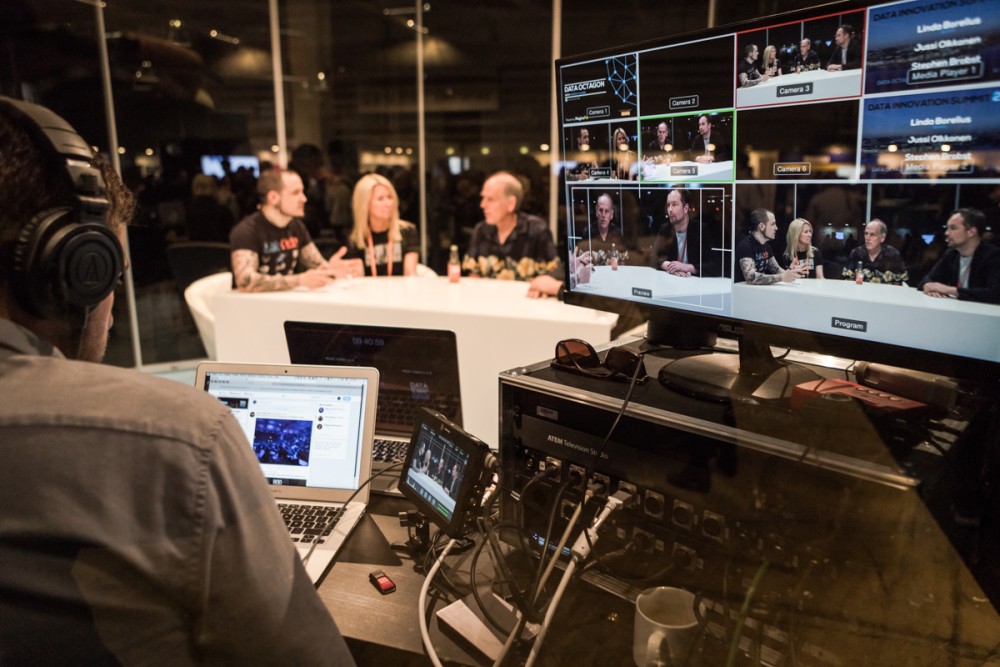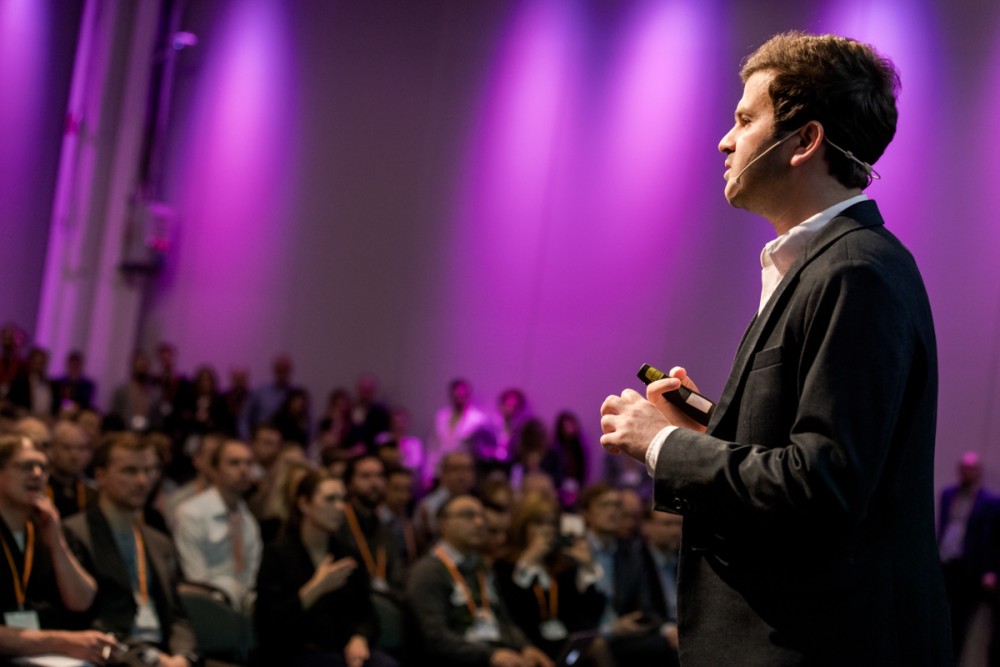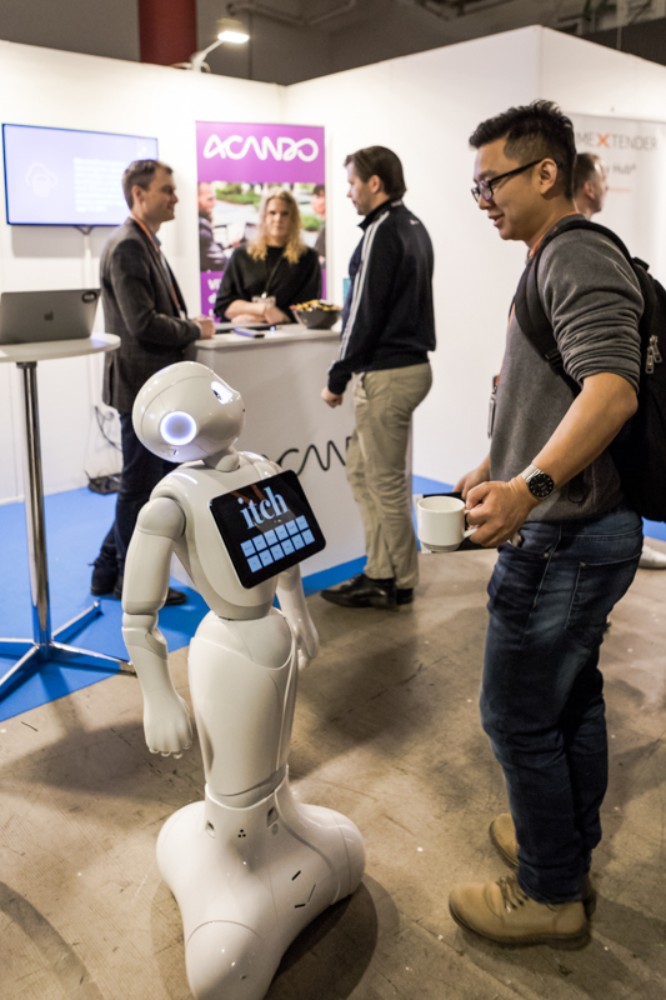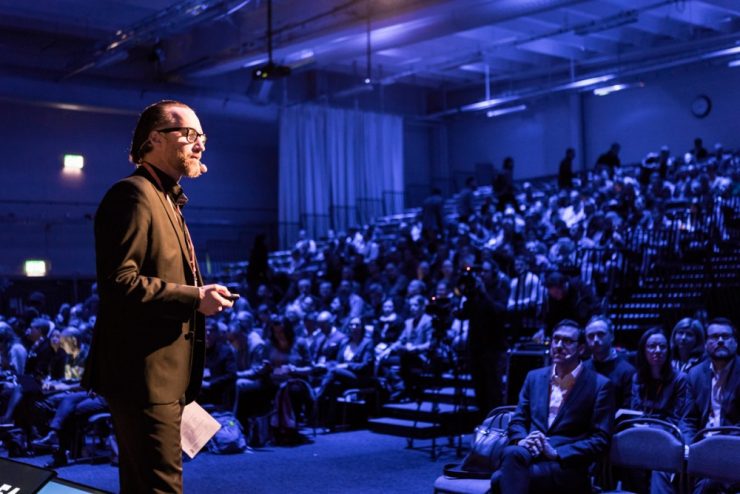Highlights
In 2018, data innovation was a hot topic of discussion in organisations and growing numbers of companies were interested in jumping on the innovation bandwagon.
The interest for the Data Innovation Summit from international practitioners and technology providers was even more amplified in the 2018 edition. The Data Innovation Summit was enhanced with exciting new features and even greater content. We added new stages with practical case studies on Data-Driven Innovation, Analytics, Data Science, Machine Learning, Artificial Intelligence and IoT Insight. Additionally, the agenda was topped up with the Data Octagon program live-streamed from the Data Innovation Summit.


The theme of the 2018 edition was centred around people-process-technology-data, introducing data in the adage as a prerequisite for competitiveness and innovation in the new digital economy. Attendees of the 2018 edition could learn from clear practical examples of it, including the clear ROI organisation benefiting from applying it.
These are the highlights of the 3rd edition of the Data Innovation Summit in 2018
Driving Results With Operational Decision Support Apps – Rado Kotorov
Rado Kotorov, former Chief Innovation Officer & VP at the Office of the President at Information Builders, currently CEO of Trendalyze, talked about the 4th industrial revolution that impacted every aspect of the business already in 2018. The biggest impact comes from leveraging data to improve decision making at the front line, i.e. the companies’ operations where costs are incurred and profits are made, Rado argued.
The key to success in the digital economy is decision automation and empowerment of front line workers with information, he also stated. He put the focus on how to leverage today’s data management and analytics technologies to deliver killer apps to front line workers and how they create a new performance culture.
The Data Game – Dylan Tredrea
The game industry was already transformed into a hub of data-driven expertise in 2018. Dylan Tredrea, then Director, Product Management at Rovio Entertainment Corporation, shared specific approaches, processes, and tips from the game industry on how to ensure data-driven iterative development is having a significant business impact on a firm’s value and growth.
He discussed the key aspects of data-driven development, how to prioritise the few good ideas out of the hundreds and thousands of proposals, and how to maximise return on investment of business intelligence/analysis resources.
Bridging The Gap Between BI And Operations – Ricardo Rodrigues
Ricardo Rodrigues, Global Operations and Strategies Pricing Manager at Opel, took the stage to talk about how to close the gap between Business Intelligence and Operations. Speaking from his data analytics experience, he shared “To Dos” and “Not To Dos” in order to ensure BI and Operations work effectively as one team and projects meet the expectations. Ricardo covered practical examples to demonstrate the effectiveness of certain approaches and the downfall of others.
Videogame Player Segmentation – Alessandro Canossa & Sasha Makarovych
Alessandro Canossa & Sasha Makarovych, representing Massive Entertainment – A Ubisoft Studio, related the strategies they explored to segment, profile and model their players in the game Tom Clancy’s The Division, which relied on clustering based on aggregated characteristics. More specifically, Alessandro and Sasha described the benefits and challenges of adopting this segmentation approach, the methods they used, and results of the process. As they explained, one of the risks of this approach is that the difference between segments can be minimal and not very descriptive. Watch Alessandro’s and Sasha’s presentation to learn how they represent users as a combination of disconnected features by aggregating data.


Data And AI As The Foundation For Building The Next Generation Bank – Daniel Tidström
Daniel Tidström, in his previous position as Head of Analytics at Nordnet Bank AB, presented Nordnet Bank’s goal to create the best customer experience in their business and create the next generation bank. AI played a front central part in this journey, enabling them to be smart and scalable. Daniel also elaborated on the prerequisites for enabling AI in an organisation and why AI is mandatory for scaling innovation.
AnalyticsOps: The Path To Production – Errol Koolmeister
Errol Koolmeister taught us how to accelerate our models into production and cut the regular 6-12 months of development time into weeks, or even minutes. In his presentation, Errol also outlined how to leverage best practices from continuous integration into Analytics and how to involve business in automated deployment processes.
Errol also shed light on the value challenge that organisations faced and the small number of big data projects that reached production, which is essential to get value from advanced analytics. As a solution, he introduced AnalyticsOps, which unites the best practices from analytics, DevOps and operations and accelerated analytics production.
What’s Watson Working On? Applied AI In The Cognitive Era – Patrick Couch
Patrick Couch, Business Developer, Speaker & Spokesperson for Artificial Intelligence (Watson) at IBM, talked about how Watson provided real productivity gains and value increases, and the most mature use-cases like human-machine interaction, discovery services and expertise democratisation.
When IBM’s Artificial Intelligence technology beat the most successful Jeopardy! Champions back in 2011, it made not only headline news and IBM Watson a household name, but it also ushered in what IBM has defined as the Cognitive Era and AI’s supreme reign on top of the Gartner hype-cycle.
The same Watson that beat Jeopardy became part of IBM’s natural language understanding services. As Patrick stated, cognitive technologies and AI are becoming more and more established as transformative tools in a variety of industries.
Tinder For Robots: Process Meets Automation – Pierluigi Mega
Pierluigi Mega, Global Smart Process Automation Lead at Merck Group, brought up the questions and proposed solutions to identify the best RPA solution for a process and processes to be automated. He also presented how Merck Business Services implements RPA, and more specifically, how he made processes meet technology and automation at Merck.
Pierluigi stated that just like the industrial manufacturing industry developed into a highly automated industry, so would the back office or service industry follow suit and rely on SPA (Smart Process Automation).


Democratisation Of AI – Making State-Of-The-Art Techniques Available For All – Luka Crnkovic-Friis
Luka Crnkovic-Friis, CEO at Peltarion, also joined us at the Data Innovation Summit 2018, to talk about Peltarion’s work and single focus of democratisation of AI, helping companies transition into an AI-First future.
Luka also explained why the potential of AI in 2018, which was higher than ever before and outlined real-world industrial examples of what AI can be used for. He also presented the challenges with getting started with AI for the business and provided advice for companies to prepare and take the first step making use of state-of-the-art techniques.
IoT Innovation And The Role Of Chief Data Officer – Vanessa Eriksson
Vanessa Eriksson, Member of the Board of Directors at Fidesmo, talked about how innovation drives the agenda of the Chief Data Officer (CDO).
Vanessa, with years of previous experience in the position of a Chief Data Officer, referred to Gartner’s definition of a CDO as the executive who carries the accountability of the organisation’s enterprise-wide data and information strategy, governance, control, governance, policy, development and effective exploitation, and she added that no matter the title, the CDO does all the above. Vanessa moreover outlined the challenges that face the Chief Data Officer faced in 2018 and still faces and CDO trends in the Nordics.













Add comment